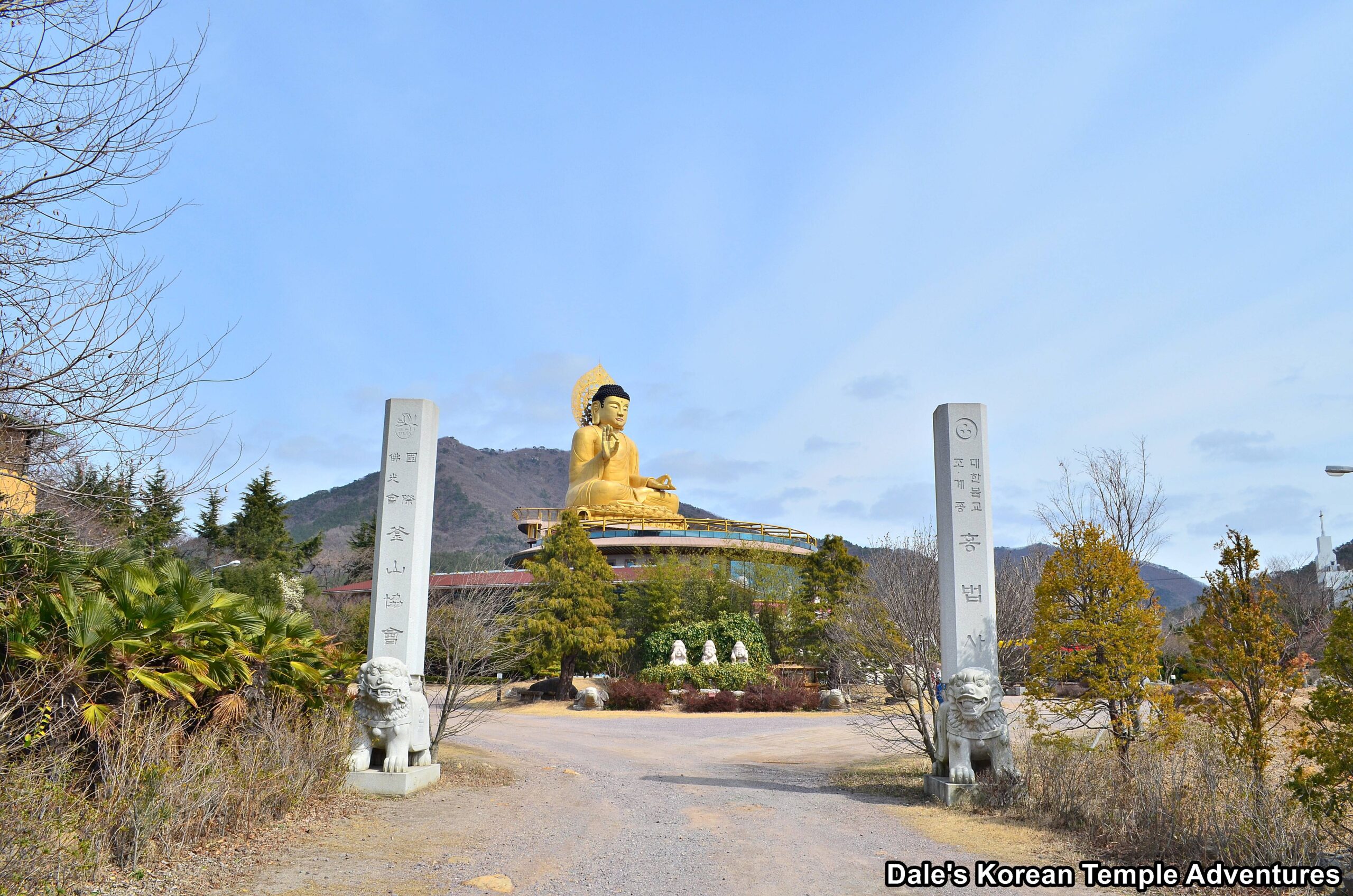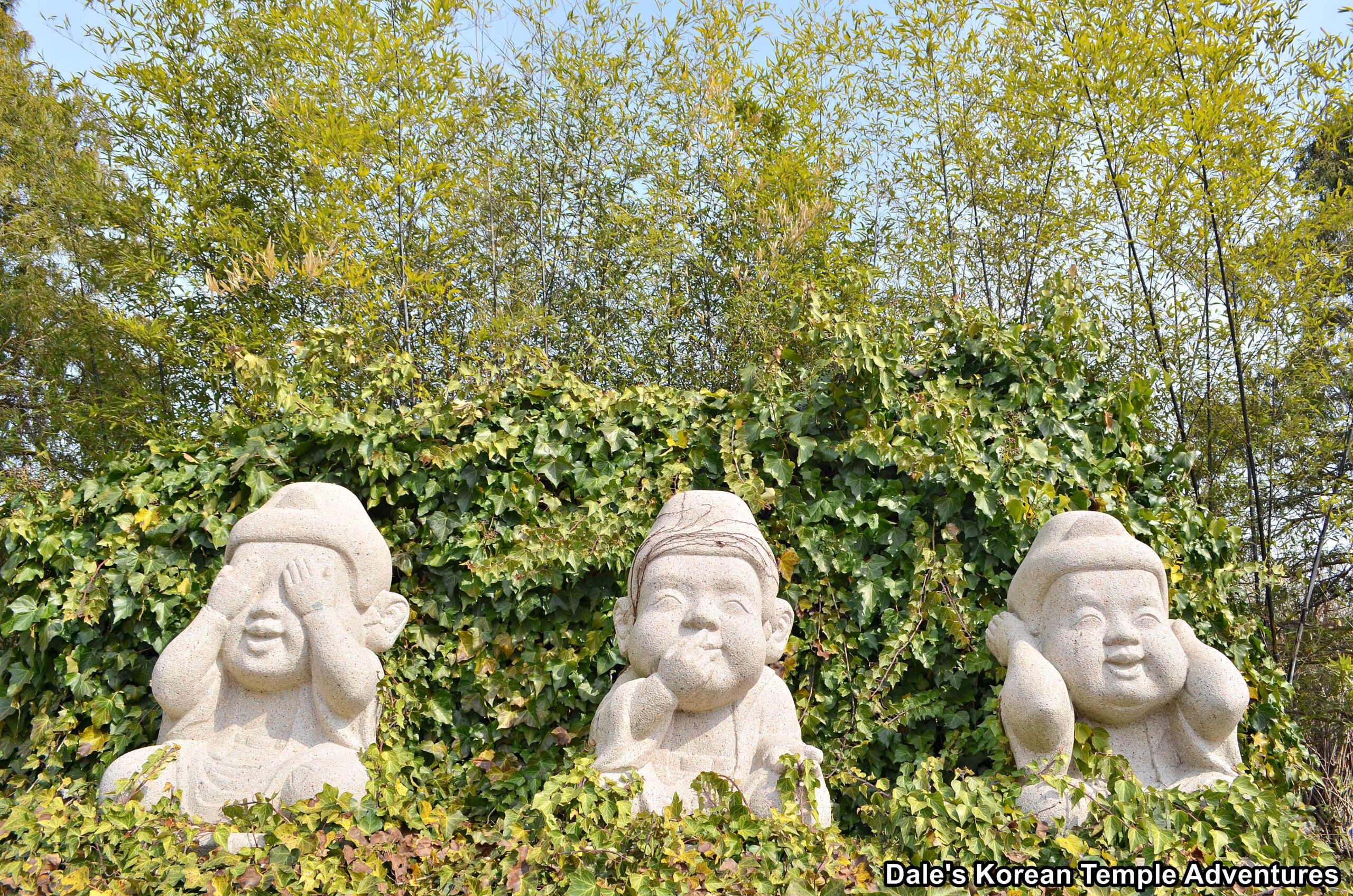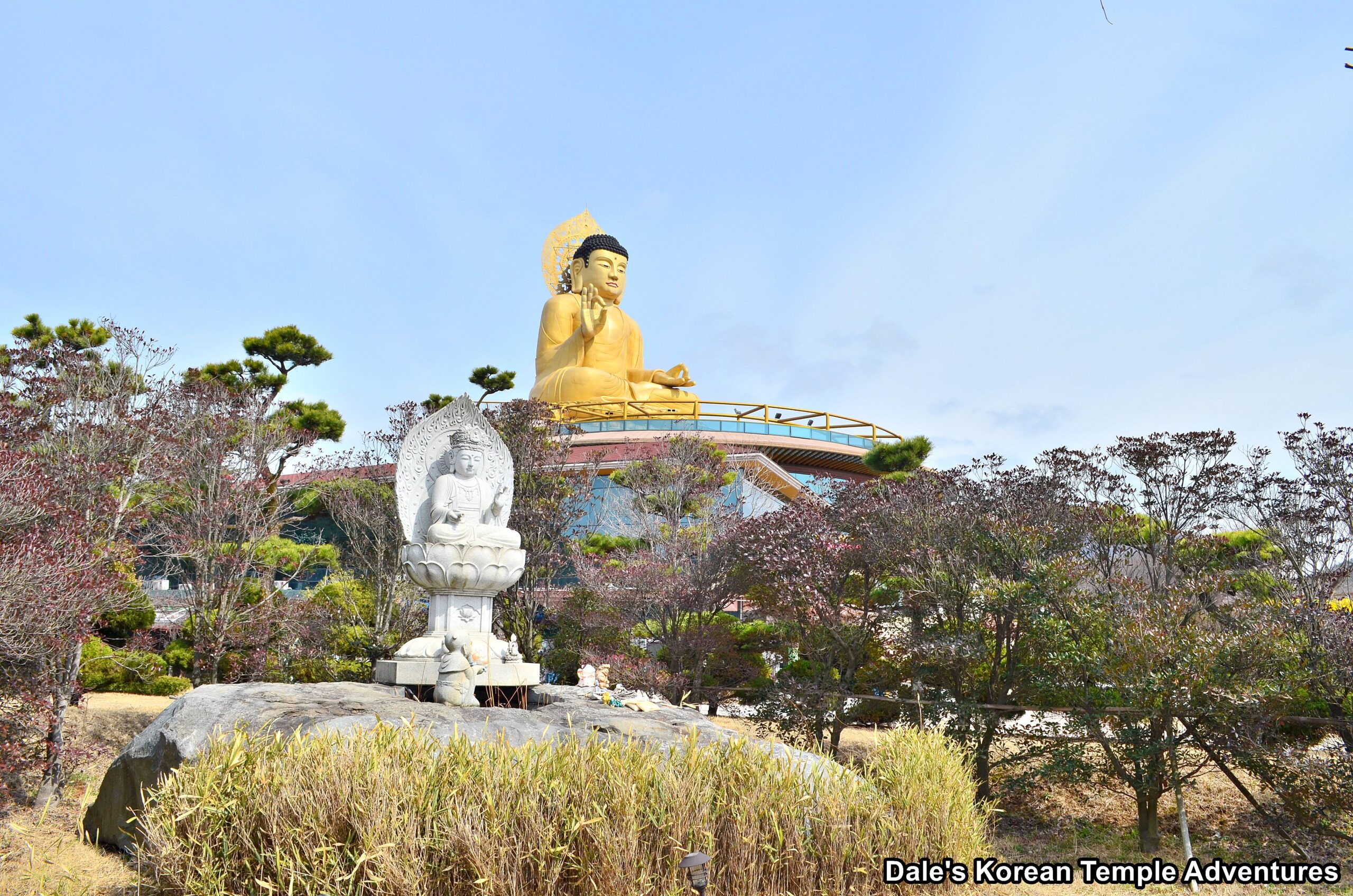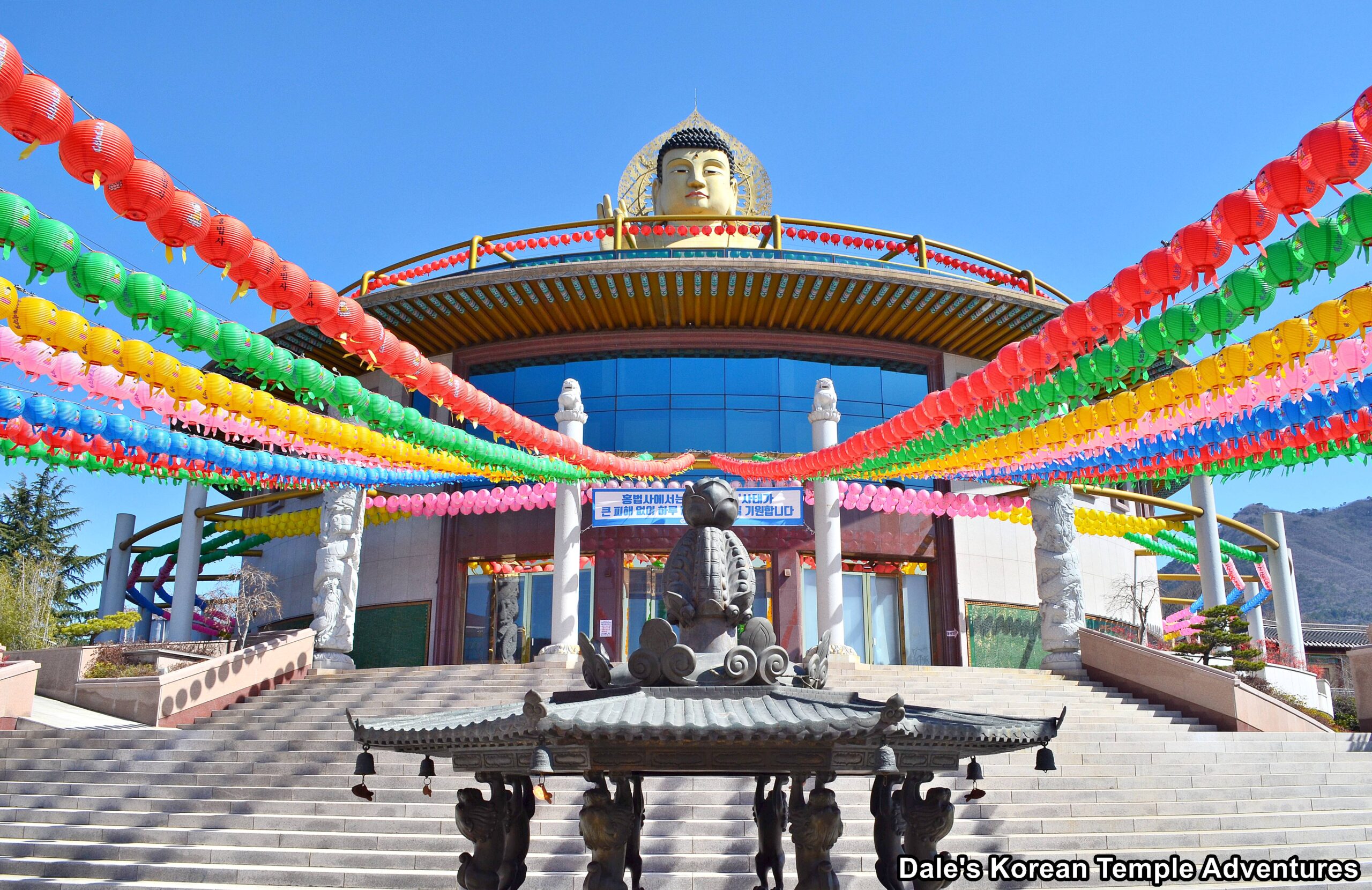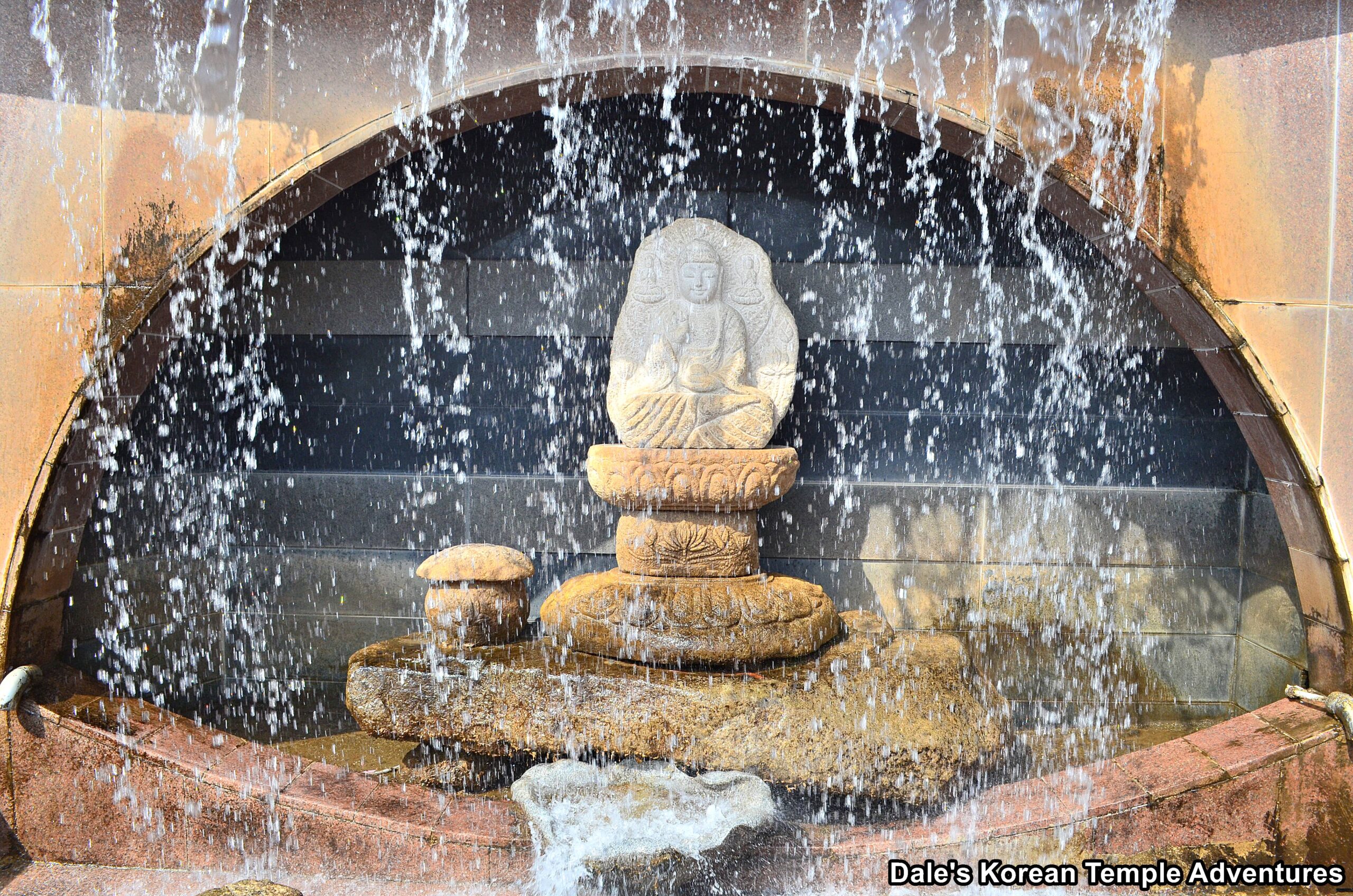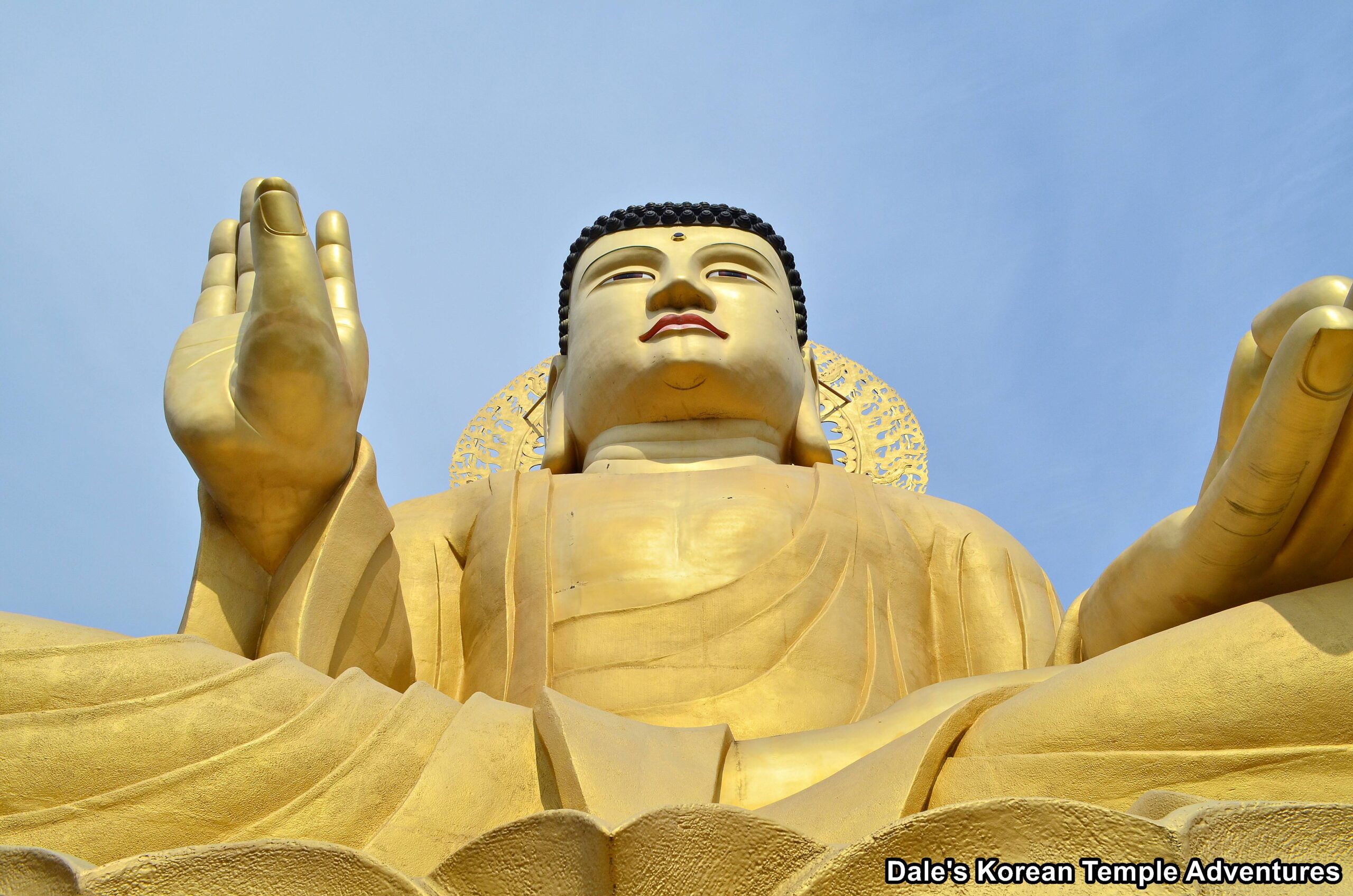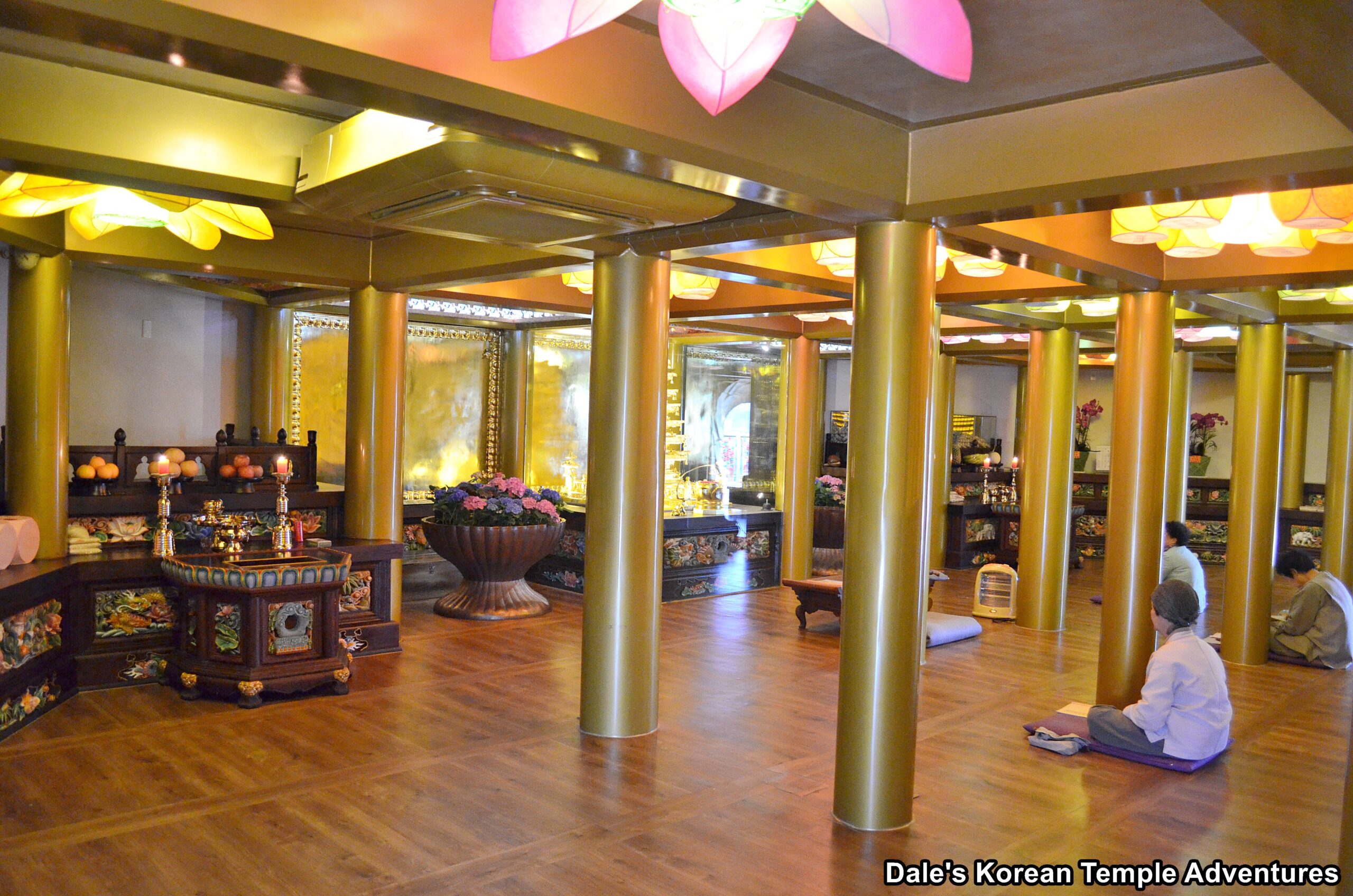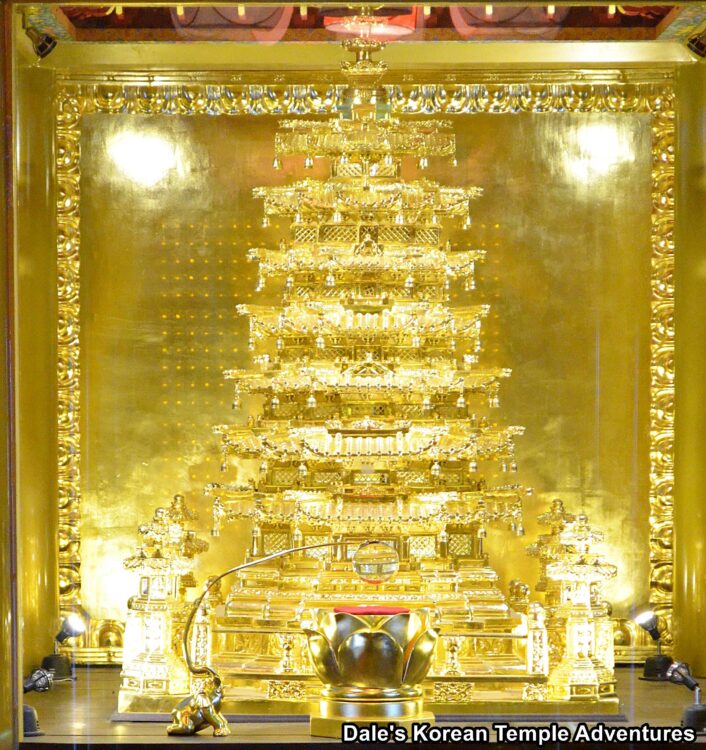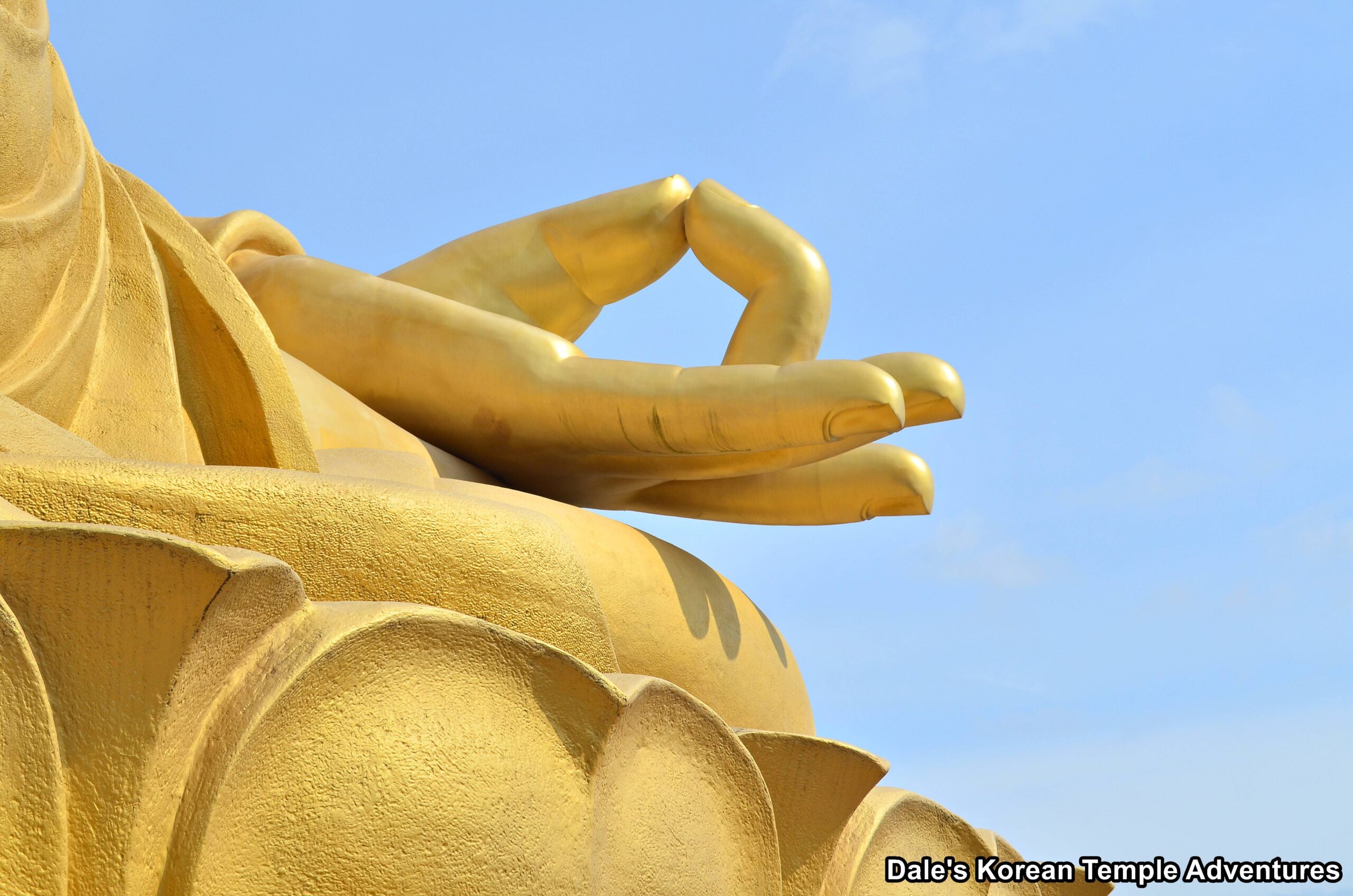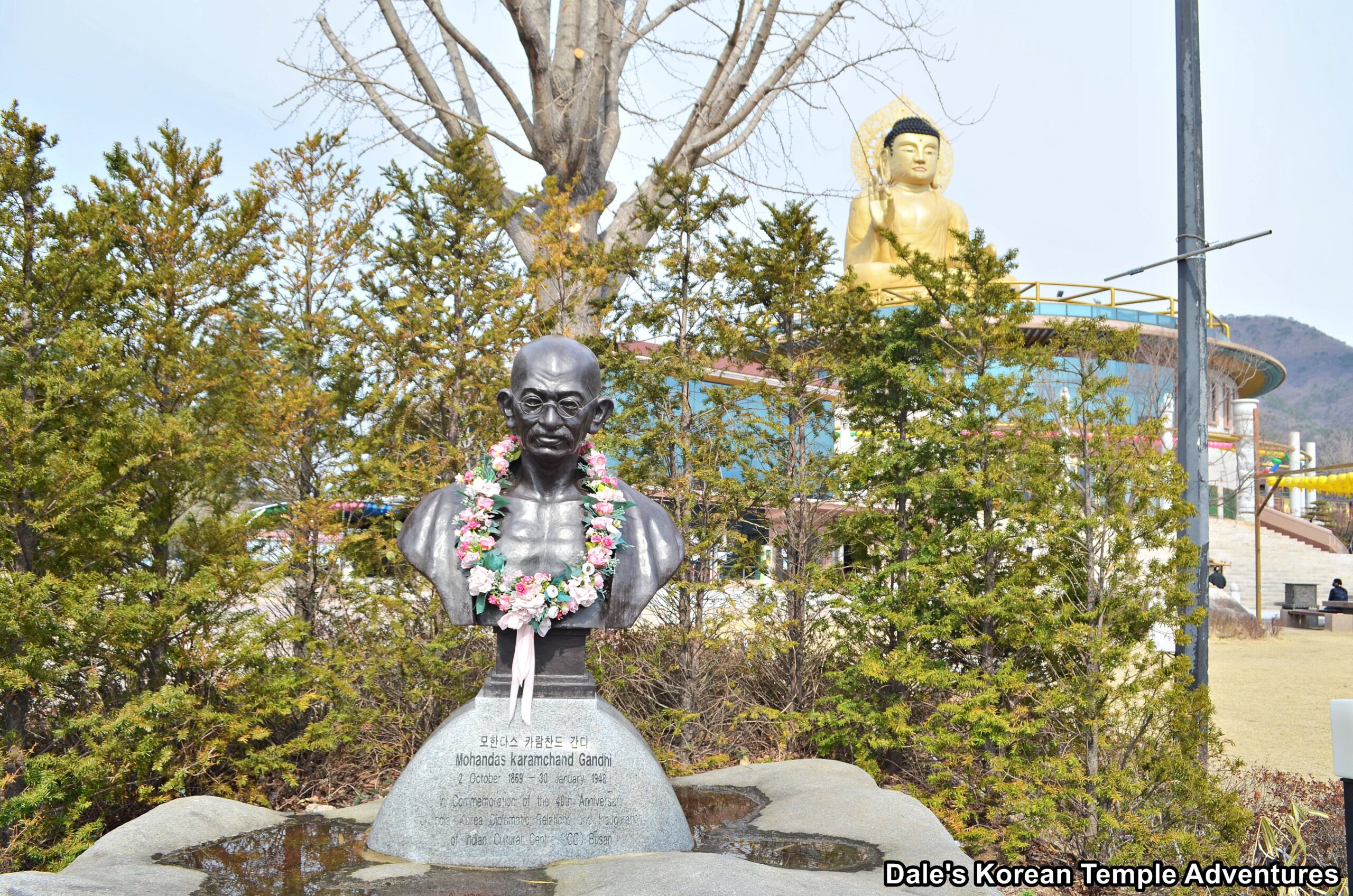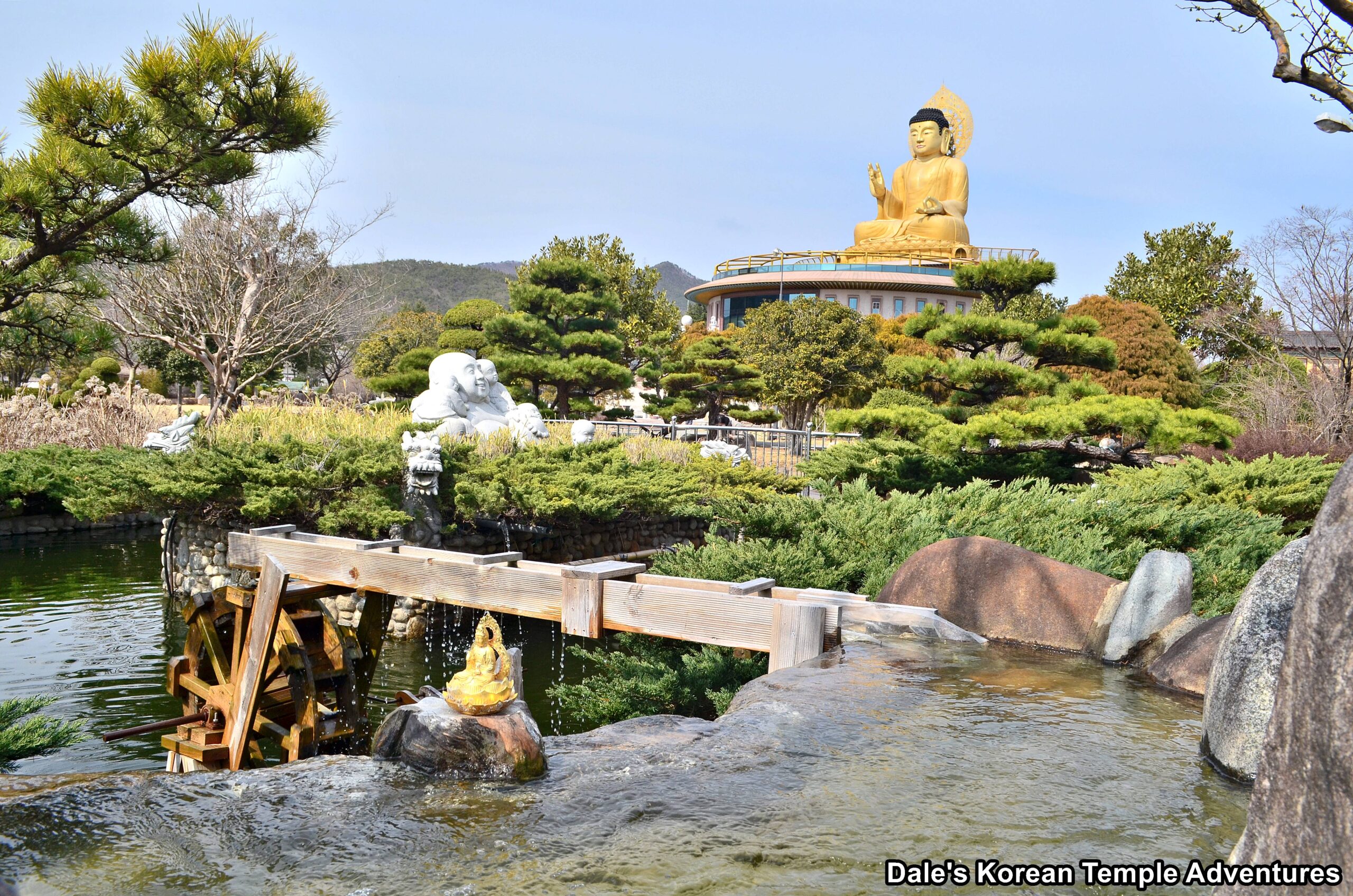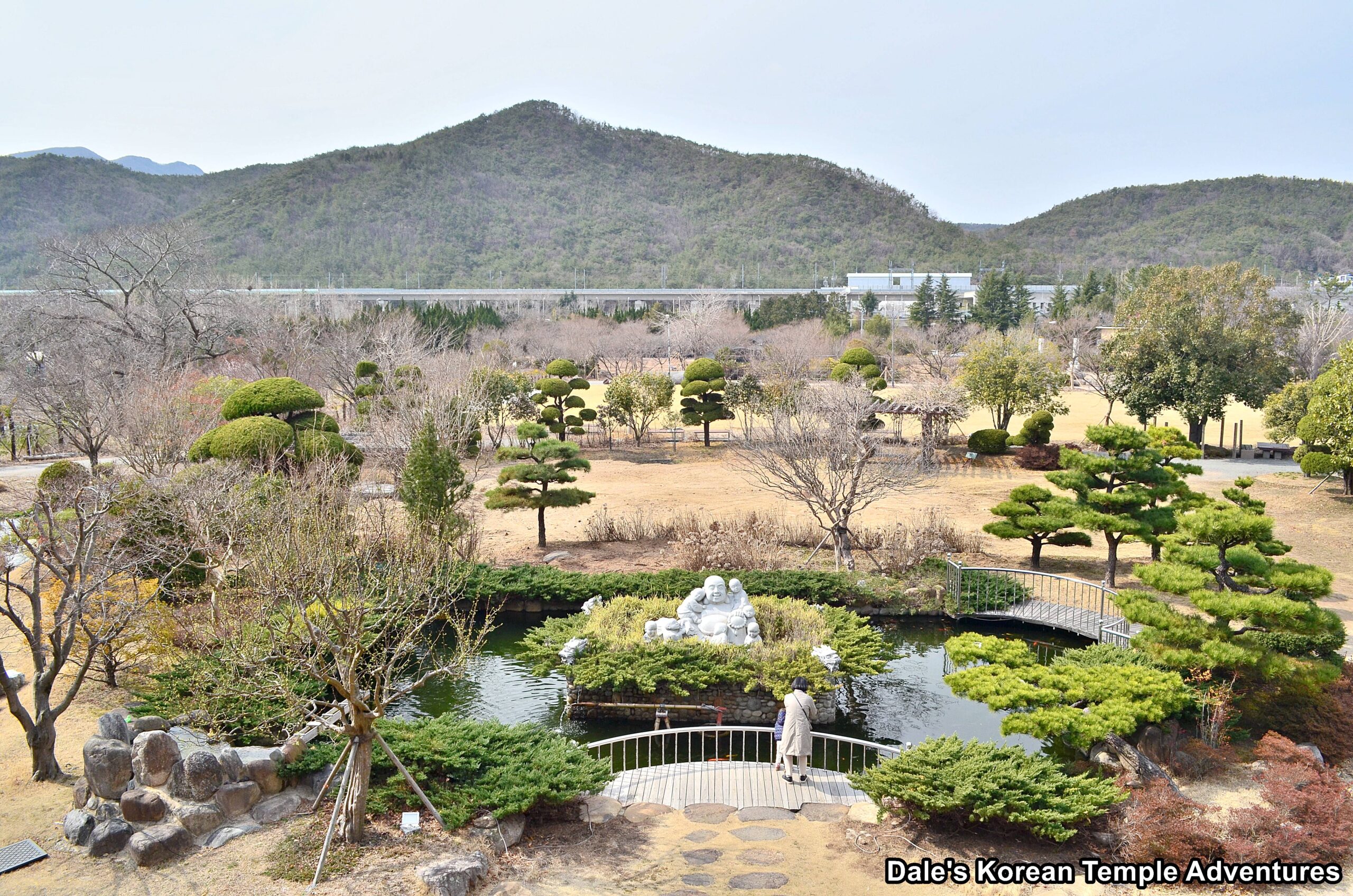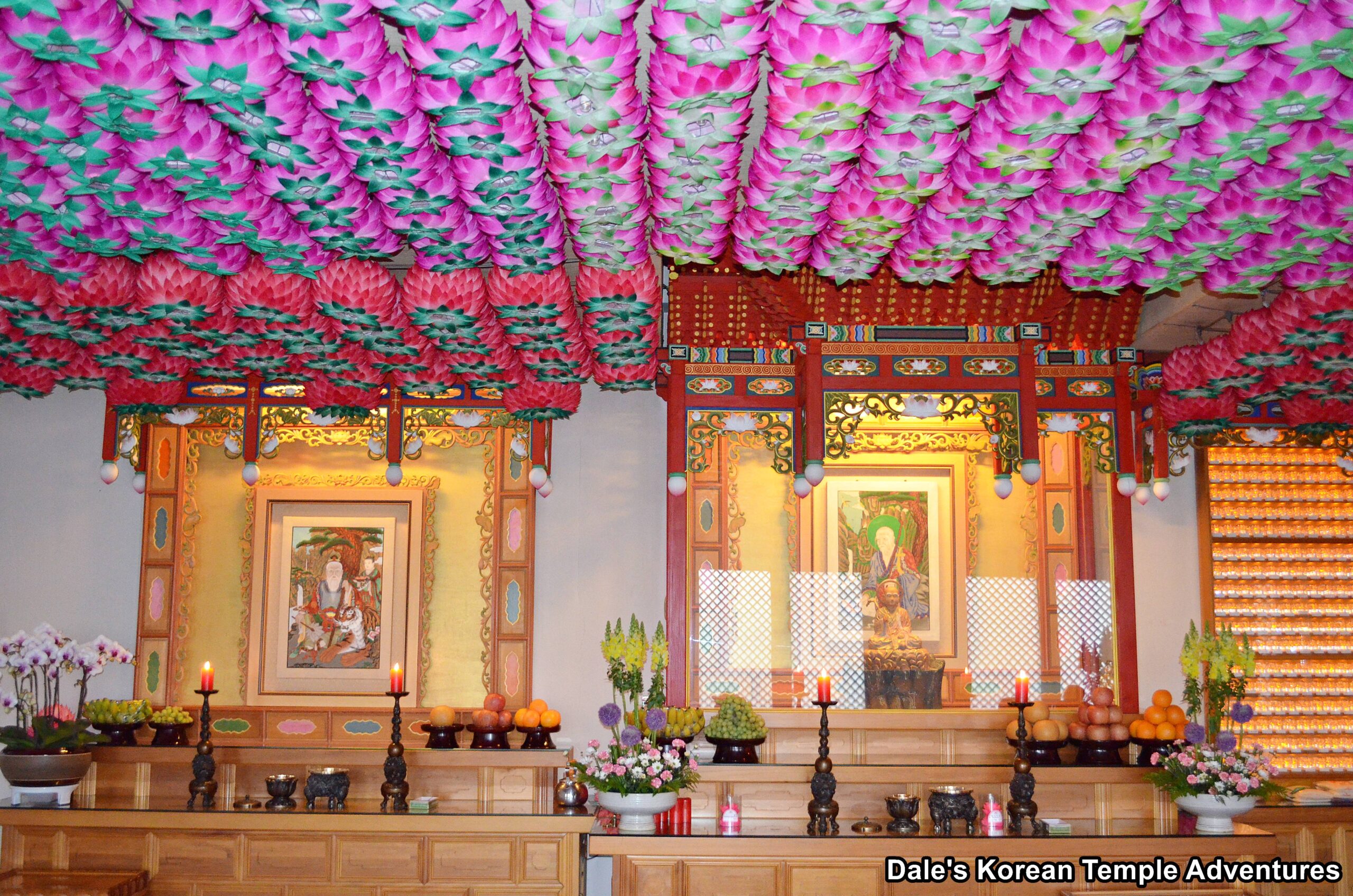Hongbeopsa Temple – 홍법사 (Geumjeong-gu, Busan)
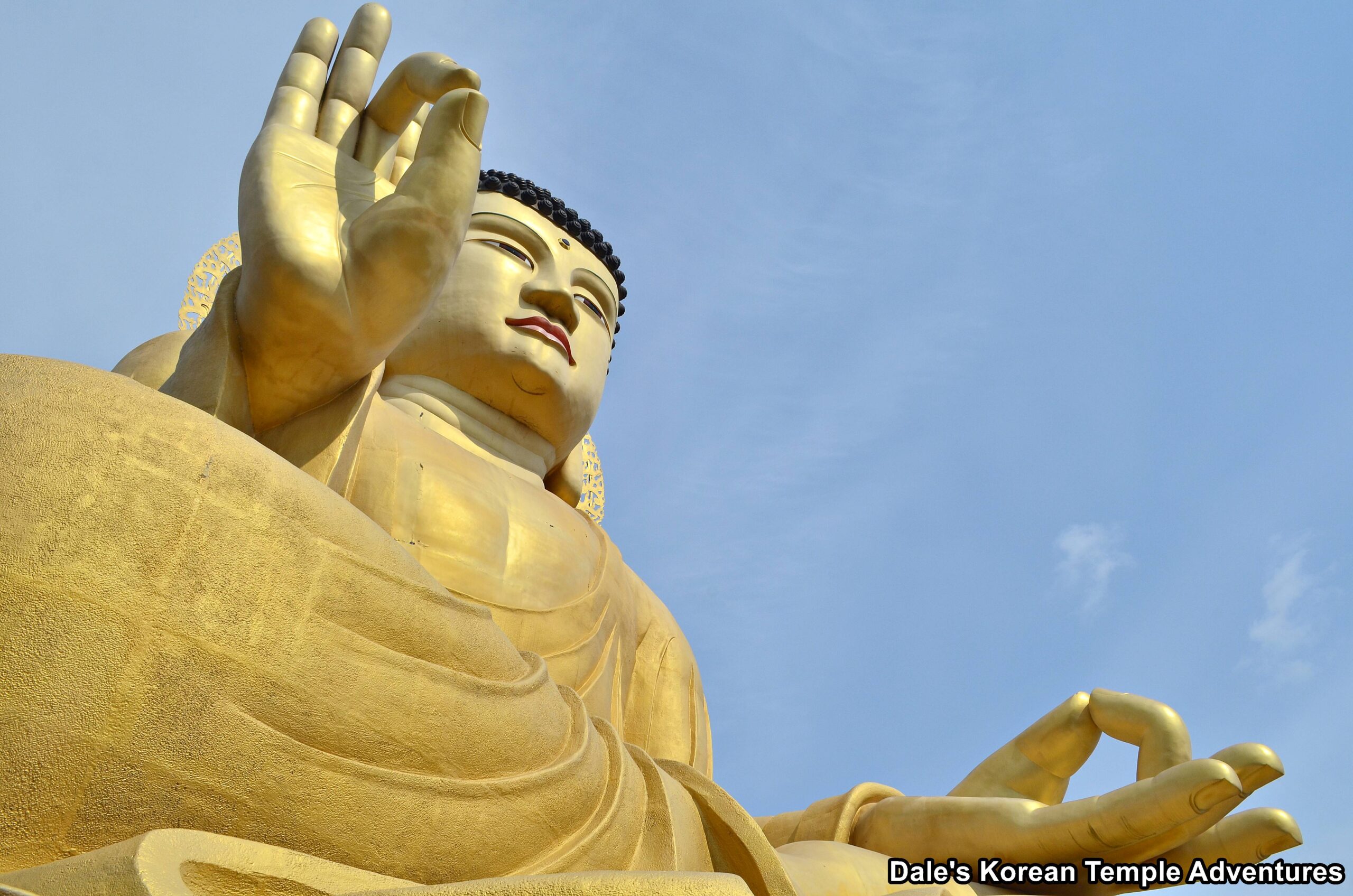
Temple History
Hongbeopsa Temple is located in the very northern part of Busan in Geumjeong-gu to the west of Mt. Cheolmasan (605.3 m). The name of the temple means “Spreading the Word of Buddhism” in English. Hongbeopsa Temple was first built in 2003. Hongbeopsa Temple was converted from farmland into the temple we see today. And this modern temple has a very modern design, which will be made plain by some of the pictures below. Hongbeopsa Temple was built through the large donation of a female lay devotee, Ha Domyeonghwa-bosal.
Another interesting little bit of information is that Hongbeopsa Temple is home to a bust of Gandhi (1869-1948). You can find this out in front of the Daegwangmyeong-jeon Hall. This bust was given by the Indian government to the head monk at Hongbeopsa Temple to commemorate the 40th anniversary of diplomatic relations between Korea and India. The reason that it was specifically given to Shimsan, the abbot of Hongbeopsa Temple, is that he lent a building for the creation of an Indian Culture Center.
Also of note, Hongbeopsa Temple is home to a very popular Temple Stay program.
Temple Layout
After circumnavigating the perimeter to the temple grounds when you first arrive, you’ll eventually find yourself in the temple parking lot on the west side of the temple grounds. As you pass by the lion-based entry markers, you’ll notice the ever-present giant bronze statue of Amita-bul (The Buddha of the Western Paradise) seated atop the modern Daegwangmyeong-jeon Hall main hall at Hongbeopsa Temple. But before the main hall, you’ll first come across a triad of childlike stone statues that embody the Buddhist idea of “Hear No Evil, See No Evil, and Speak No Evil.” A little further along, and you’ll encounter a beautiful statue dedicated to Gwanseeum-bosal (The Bodhisattva of Compassion).
As you near the forty metre tall modern main hall, the Daegwangmyeong-jeon Hall, you’ll notice the beautifully maintained grounds to your right. Really, it’s one of the best landscaped temple grounds in Korea. To your left is the auditorium-like modern main hall. In front of the wide flight of stairs that lead up to the multi-storied Daegwangmyeong-jeon Hall, you’ll find a beautiful bronze incense burner with eight decorative lions holding up the roof of the incense burner. This incense burner runs parallel to a row of perfectly placed mini-bridges that span a network of Koi ponds. And just before you make your way up the stairs to the first floor main hall, and to the far right, there’s a serenely standing statue dedicated to Yaksayeorae-bul (The Buddha of Medicine) under an artificial waterfall.
As you finally ascend the flight of stairs that will lead you up to the first floor main hall and the crowning twenty-one metre tall bronze statue of Amita-bul atop the Daegwangmyeong-jeon Hall, the entry to the massive main hall is to the far left. Here, you can either head into the cavernous main hall, or you can take the elevator up to the fifth floor of the structure, where you’ll find the twenty-one metre tall seated statue dedicated to Amita-bul.
If you first decide to visit the first floor, you’ll first be greeted by a beautiful ceiling of paper lanterns. As for the main altar, you’ll find three large statues. The one in the middle is dedicated to Birojana-bul (The Buddha of Cosmic Energy). This statue is joined on either side by Seokgamoni-bul (The Historical Buddha) and Rocana-bul (The Perfect Body Buddha). There are also two images of the Dragon Ship of Wisdom and the Buddha near the main altar triad.
After the main hall, you can make your way back to the elevator, which will bring you up to the fifth floor. At the top of the Daegwangmyeong-jeon Hall, you’ll find an amazing view awaiting you. You’ll also finally come face-to-face with the ever present twenty-one metre seated statue dedicated to Amita-bul. Rather amazingly, you can enter into the massive statue. And sitting on the main altar inside the bronze Amita-bul is a sari (crystallized remains) of the Buddha, Seokgamoni-bul.
After making your way down from the heights of the fifth floor of the Daegwangmyeong-jeon Hall, you can explore the beautiful grounds at Hongbeopsa Temple, including a large Koi pond out in front of the Dokseong/Sanshin-gak Hall to the south of the main hall. Sitting in the centre of the Koi pond is a large stone statue dedicated to Podae-hwasang (The Hempen Bag). There’s also a beautiful wooden waterwheel spinning to the front side of the Koi Pond. As for the two-story Dokseong/Sanshin-gak Hall, which is surrounded by cherry blossom trees, you’ll find a triad of shaman murals housed inside this temple shrine hall. Housed inside this shaman shrine hall, you’ll find two beautiful paintings dedicated to Dokseong (The Lonely Saint) to the right and Sanshin (The Mountain Spirit) to the left.
How To Get There
There is a Hongbeopsa Temple shuttle bus that leaves from the Nopo-dong Subway Station, stop #134, in Busan. This bus leaves every thirty minutes between 8 a.m. and 6 p.m. However, there has to be at least five people for the bus to leave the station. And to return to Nopo-dong Subway Station, the bus leaves Hongbeopsa Temple at fifteen and forty-five minutes on the hour, every hour. As for lunch, buses do not leave between 11:00 a.m. to 12:15 p.m.
Overall Rating: 7/10
Without a doubt, the main highlight to Hongbeopsa Temple is the twenty-one metre tall seated statue dedicated to Amita-bul (The Buddha of the Western Paradise) that sits atop the modern main hall. Adding to the overall artistry of this bronze statue is a hollowed out interior that houses one of the sari from the Buddha, Seokgamoni-bul. Also adding to this crowning statue are the beautiful grounds at Hongbeopsa Temple, as well as the main altar statues inside the Daegwangmyeong-jeon Hall and the two shaman paintings housed inside the Dokseong/Sanshin-gak Hall.
